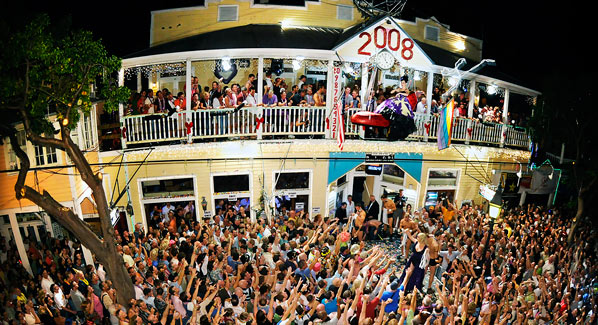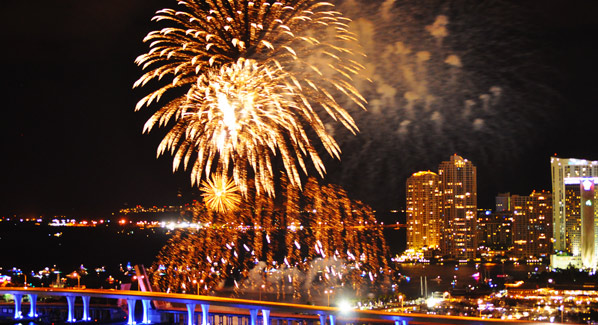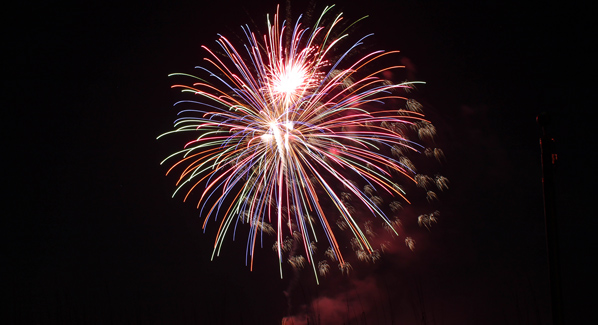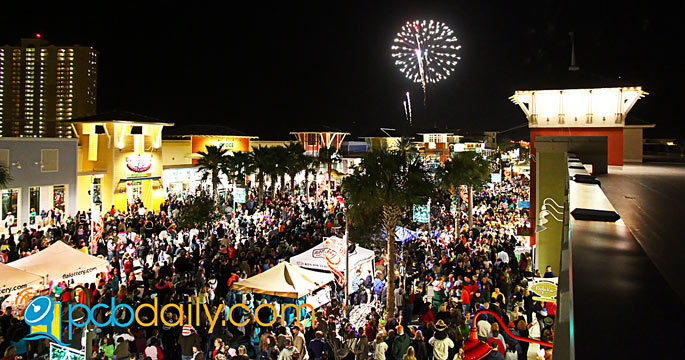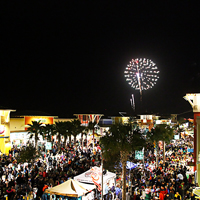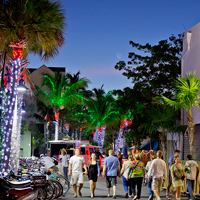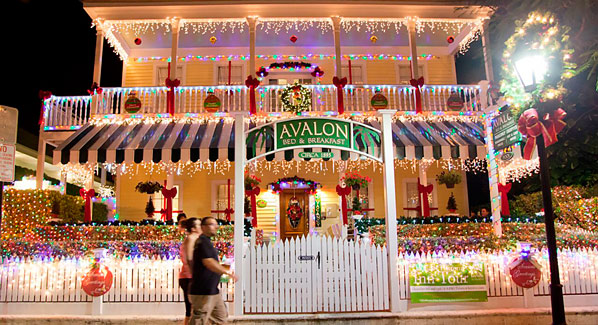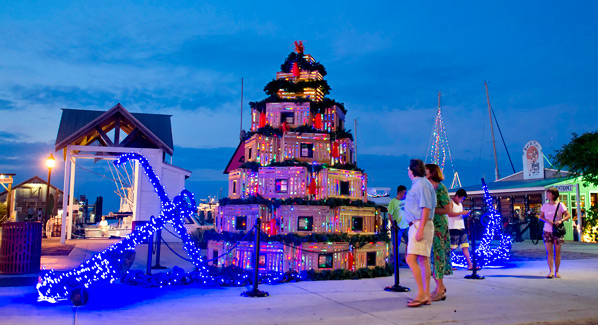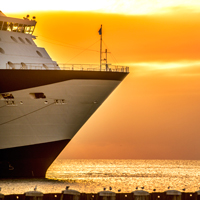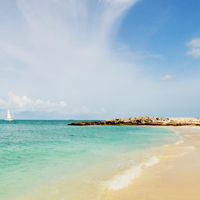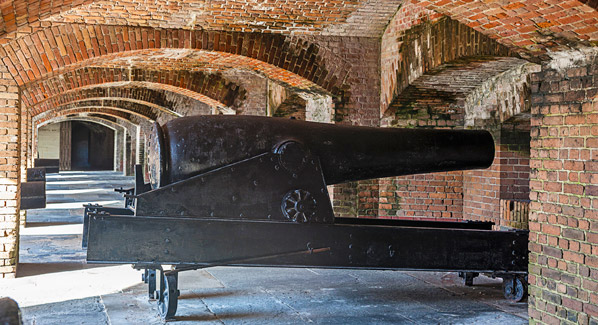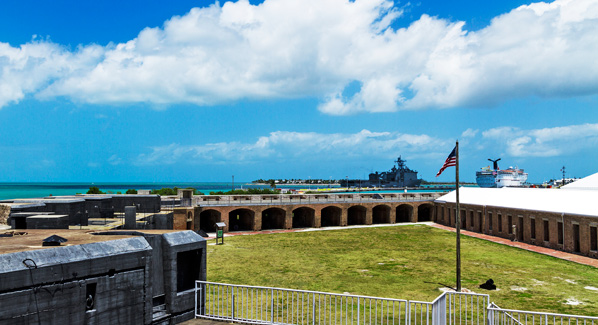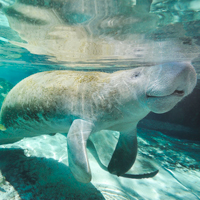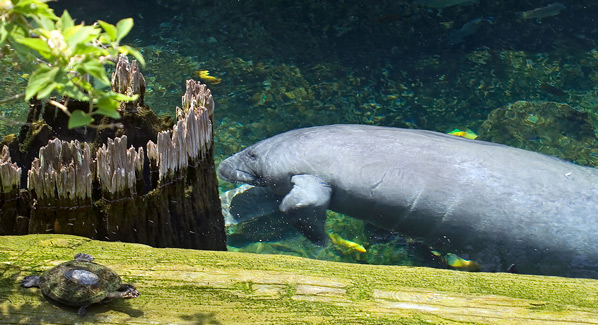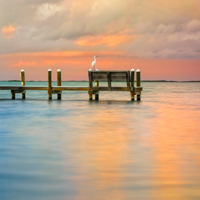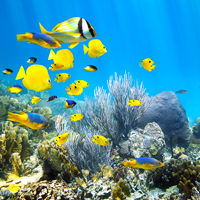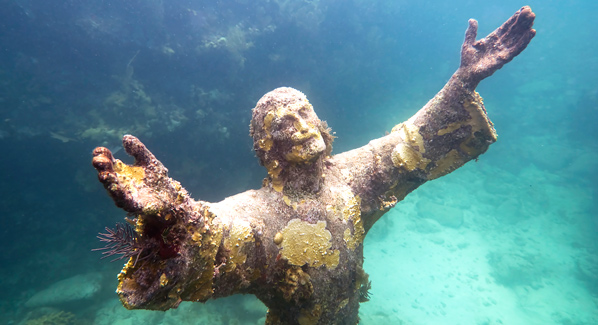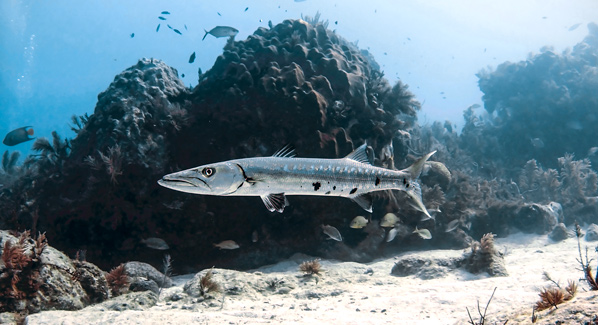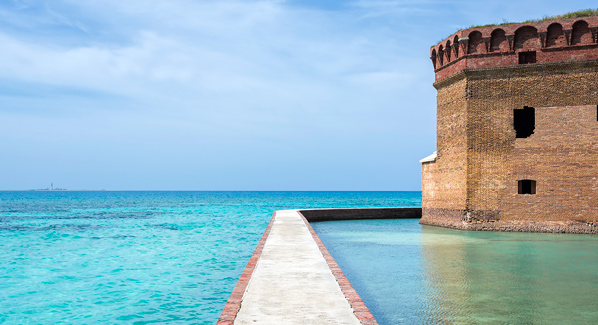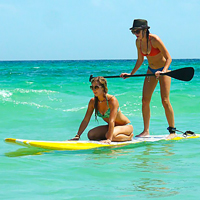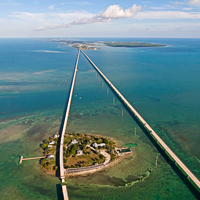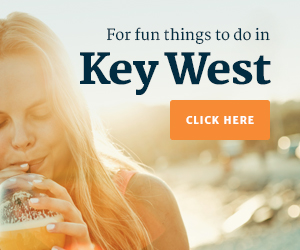Breathe in the tropical island air with a visit to the Florida Keys. This 100-mile chain of islands is connected by bridges, and divided into five regions: Key Largo, Islamorada, Marathon, Big Pine and the Lower Keys. No matter which of them you choose to explore, here are some of the best ways to get the most out of your trip and meet some really cool locals along the way.
1 Party Under a Full Moon
If you ever wanted to go to a full-blown beach party, bonfires and all, the Full Moon Party on the sands fronting Pierre’s Lounge & Restaurant and the Beach Café at Morada Bay will fulfill your expectations. Every full moon, tables and chairs are sprawled across the sands facing the Florida Bay and moon gazers congregate to drink island cocktails and rock out to reggae bands. Surprise entertainment from a Bahamian Junkanoo parade to Brazilian capoeira dancers and an explosive display of fireworks make this Islamorada party one you don’t want to miss.
2 Snorkel the Reef
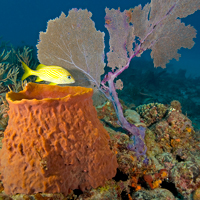
Photo: iStock
Tour boats ferry snorkelers from the docks at Key Largo’s John Pennekamp Coral Reef State Park to protected offshore reefs that are part of the Florida Keys National Marine Sanctuary. The most popular sites are in novice-friendly depths of five to 15 feet, shallow enough for ambient sunlight to bring out the colors of the underwater formations, which include patches of brain coral and intricate staghorn and elkhorn coral gardens. French angelfish, Spanish hogfish and hawksbill turtles are often sighted. To avoid crowds make the trip on a weekday, as weekend departures often fill to capacity.
3 Breakfast with the Locals
Funky breakfast spots from hole-in-the-wall eateries to congregate-at-the-counter spots abound on the Overseas Highway and there’s no better place to immerse yourself in the Keys laid-back lifestyle than over a stack of blueberry hotcakes at Mangrove Mike’s in Islamorada. The walls are home to watery murals with fishing vessels and colorful catches. Eavesdropping on a conversation among the locals who eat here regularly will give you an earful of just how cool it is to live in this paradise.
4 Spend a Day on the Beach
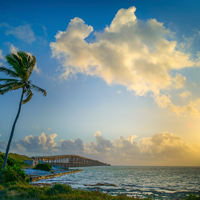
Photo: Ferran Traité Soler/iStock
Head to Bahia Honda State Park where you’ll have your choice of three beaches: the smaller Calusa Beach, the shallow Loggerhead Beach and the larger Sandspur Beach. Besides being great spots to sun and swim, the beaches are popular with birders, who can count on finding a variety of shorebirds, including willets, ruddy turnstones and plovers, and wading birds, like herons, ibis and great egrets, in the shallow sand flats. The old Bahia Honda Bridge sits on the channel at the island’s western shore, provides an interesting accent detail for that memorable photo op.
5 Take Flight
Be a daredevil and soar above the sea with a jetpack on your back. Sound like something from a James Bond movie or a Jonny Quest adventure? At the Tiki Jet on Islamorada, you can experience the thrill. After a boat ride to the flight zone, you’ll strap on the jetpack, which has an engine that pumps water up a 33-foot hose, generating 420 point of thrust. Once up in the air, you control your flight using hand controls. Instructors teach the basics before your 30-minute session.
6 Talk to the Turtles
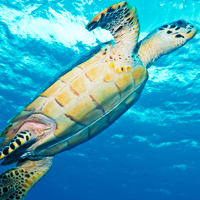
Photo: Ron Masessa/iStock
Learn about the turtles that inhabit the waters of the Keys. In Marathon the Turtle Hospital is part medical facility, part attraction. Stop in and meet Bubble Butt, a green turtle; Bender, a Kemp’s Ridley; and Rebel, a loggerhead. All three were saved after being hit by boats. On the tour you’ll learn about the different turtles, their natural habitat, what they eat, and you can ask all the questions you want as you meander from pool to pool. The only state-certified veterinary hospital in the world for sea turtles, the facility’s mission is rescue, rehab and release.
7 Treasure Hunt at the Flea Market
Hit the Lower Keys on a Saturday or Sunday and you’ll want to join the locals at the Big Pine Key Flea Market at MM 30.2. From October through July, the crowds show up in throngs for this 25-year tradition. Find everything from nautical gear to tropical items like sponges, seashells and coconut figurines, along with starfish jewelry, fish-centric T-shirts and floral sundresses. Spend the day treasure hunting and getting to know the friendly islanders.
8 Get Nostalgic on the African Queen
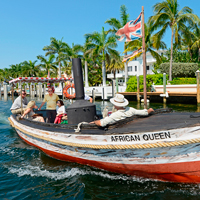
Photo: Andy Newman/Florida Keys News Bureau
Key Largo is the home port of the African Queen. And if the names Humphrey Bogart and Katherine Hepburn pop to mind when you see this historic vessel, you’re on the right track. This is the actual boat used to make the movie in the Belgian Congo in 1951. Capt. Lance Holmquist and his wife Suzanne restored the boat’s original mahogany body and now take visitors on cruises down the Port Largo canals to the Atlantic Ocean. While on board peruse the photo album documenting the filming, and brace yourself when the captain blows the whistle.
<B>
9 Shop at the Rain Barrel Artisan Village
It’s hard to miss this artist colony of shops and working studios in Islamorada. Sitting out front is a giant lobster sculpture named Betsy, which lures curious motorists into the parking lot. When they get a glimpse of the funky artwork and crafts that fills every nook and cranny of this complex, a purchase always takes place. Look for varnished woodcarvings of Florida birds, wind chimes made of ceramic fish and lots of fun souvenirs. Plan time to watch the artists at work and enjoy some Cuban coffee sold at the tiny cafe.
10 Learn about the Coral Reef
Thousands come to snorkel Florida’s coral reef. But if you’re among the curious, a visit to the Coral Restoration Foundation (CRF) in Key Largo will enlighten you about the reef and the offshore coral nurseries program. A visual presentation explains how corals grown in CRF’s nurseries are out planted to a degraded reef. Volunteers readily answer any questions and demonstrate how they use epoxy to plant pieces of live coral on rocks under the sea to help preserve and grow the reefs.
